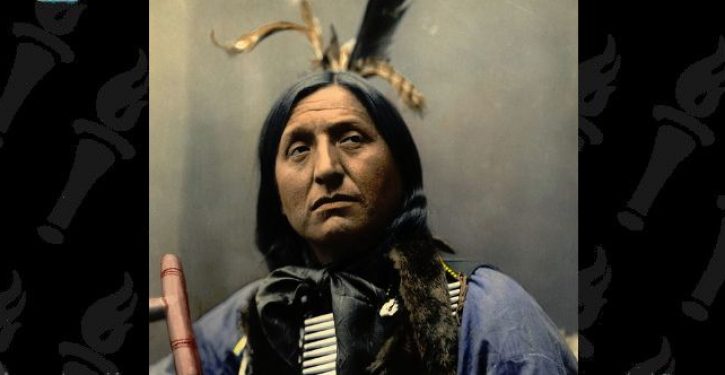
Today is the second Monday in October, and you know what that means. Well, you know what it meant. It used to be called “Columbus Day” throughout the nation and was meant to honor explorer Christopher Columbus, who reached these shores around the turn of the sixteenth century and set down the roots of European colonization.
Nowadays, Columbus’s achievements are looked upon solely as “the violent history of colonization in the Western hemisphere” and the “discovery” of a place where people already lived. And among liberals, the day named for him has been rebranded as Indigenous Peoples’ Day, an official designation in some states. This year for the first time ever, the city of Columbus, Ohio will not honor its namesake.
In a way it’s interesting that the Left prefers to focus the day on an underappreciated population since that was the original purpose of Columbus Day:
Will this presidential election be the most important in American history?
Columbus Day became a federal holiday in 1937, in part because of efforts by Roman Catholic Italian Americans. During the late 19th and early 20th century, members of the stigmatized ethnic and religious group successfully campaigned to establish a Columbus Day in order to place Catholic Italians, like Christopher Columbus, into American history. In doing so, they edged out people of Anglo-Saxon descent who wanted a federal holiday honoring Leif Erikson as the first European to reach the Americas.
We are told that Columbus’s crimes against humanity included enslaving some of the so-called “Native Americans” he encountered here, but as long as we are going to pay tribute to American Indians (as Columbus misidentified them), we should know a little bit about them.
We know from an article that appeared earlier this year at Smithsonian.com that the white settlers were not the only slave owners. The Cherokees (considered one of the more “civilized tribes”) were also slaveholders. Debunking a popular myth, author Ryan P. Smith writes:
What you probably don’t picture … are the numerous African-American slaves, Cherokee-owned, who made the brutal march themselves, or else were shipped en masse to what is now Oklahoma aboard cramped boats by their wealthy Indian masters.
Another article at the Foundation for Economic Education explodes another myth: that of the relationship between Indians and nature with special emphasis on the treatment of the buffalo:
Almost every schoolchild is taught that prior to the arrival of whites, Plains Indians lived in perfect harmony with nature as the ultimate socialist ecologists. According to the common tale, Indians had little private property-and certainly were not burdened by capitalism-and they hunted and killed only what they needed to live. Then Europeans arrived, and using the techniques of industrialized hunting, nearly exterminated the North American bison, also known as the buffalo. …
It’s a convenient and easily told story, but it has left students, well, buffaloed. It has certainly caused the story of the buffalo to be misunderstood. Several new scholarly studies have emerged, though, and they universally provide a much more complex picture of the Great Plains in the late 1800s. Among other revisions, the works address the nature of Indian hunting, white motivations for killing the bison, and nonhuman factors affecting herd sizes. Most of all, though, they show that the ultimate savior of the buffalo was not the government, but the free market. …
It is doubtful any of the authors intended their research to have political overtones per se. Dan Flores, a professor of history at Texas Tech University before moving to the University of Montana at Missoula; Shepard Krech III, an anthropology professor at Brown University; and Andrew C. Isenberg, a professor of history at Princeton, all have produced challenging new studies about Indians, whites, and the Plains environment. Most of all, they all have offered significant revisions of the views that Americans have held regarding the destruction of the buffalo.
The first myth they explode is that of the “natural” Indian who lived in harmony with nature-unlike the greedy Europeans who conquered the continent. Instead, the authors unveil evidence of communal economies that engaged in large-scale burning to “clear” forests and also to kill game. “Controlled” burns by the Indians often got out of control, and without modern firefighting equipment, flashed through forests, destroying everything in their path. Deer, beaver, and birds of all sorts were already on a trajectory to extinction in some areas, because over and above the hunting done by Indians, natural predators and disasters thinned herds. Isenberg wonders whether the North American bison herd was already falling below replacement levels before white hunters arrived.
If liberals are determined to ferret out victims to champion, they should at least do their homework.




